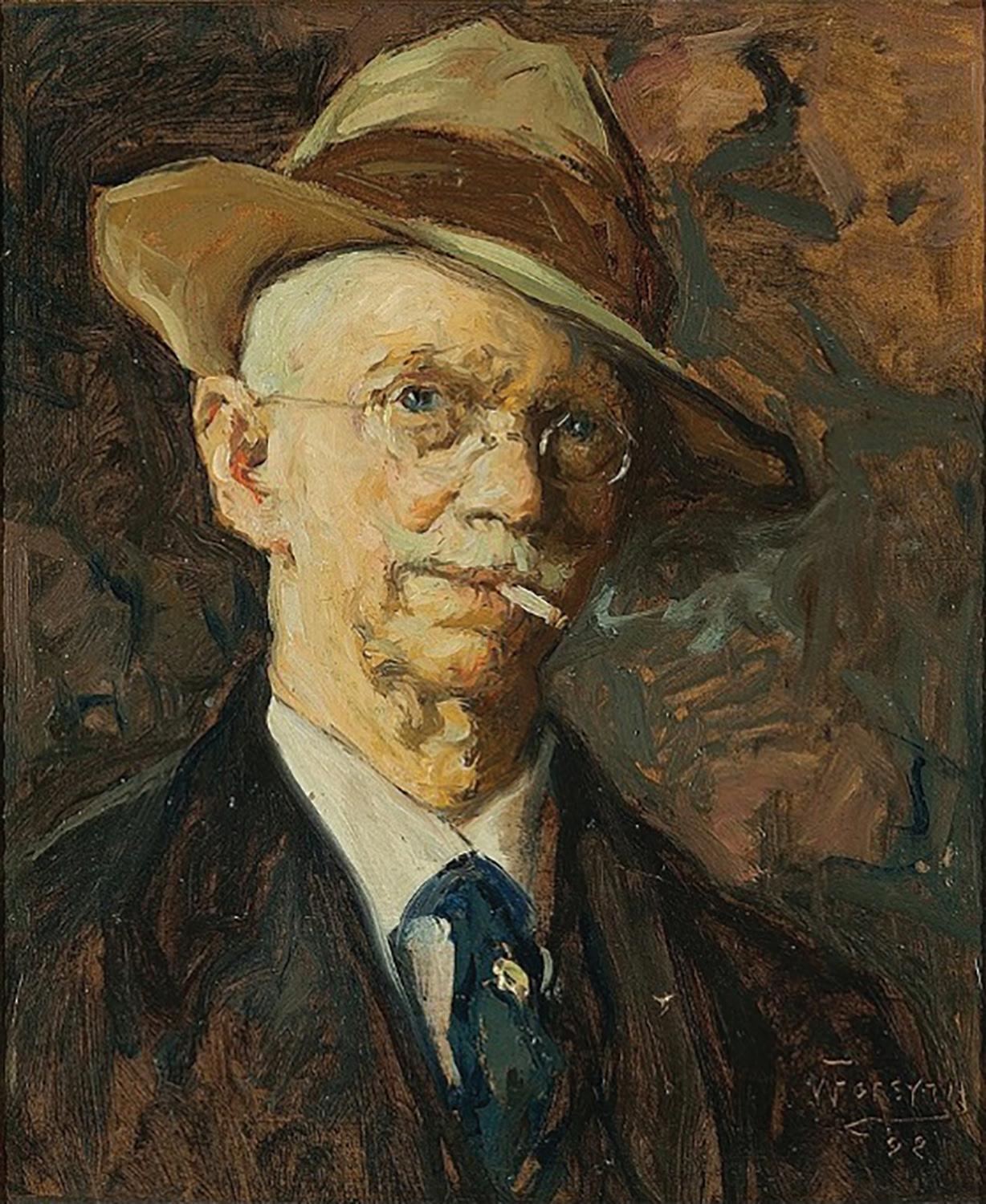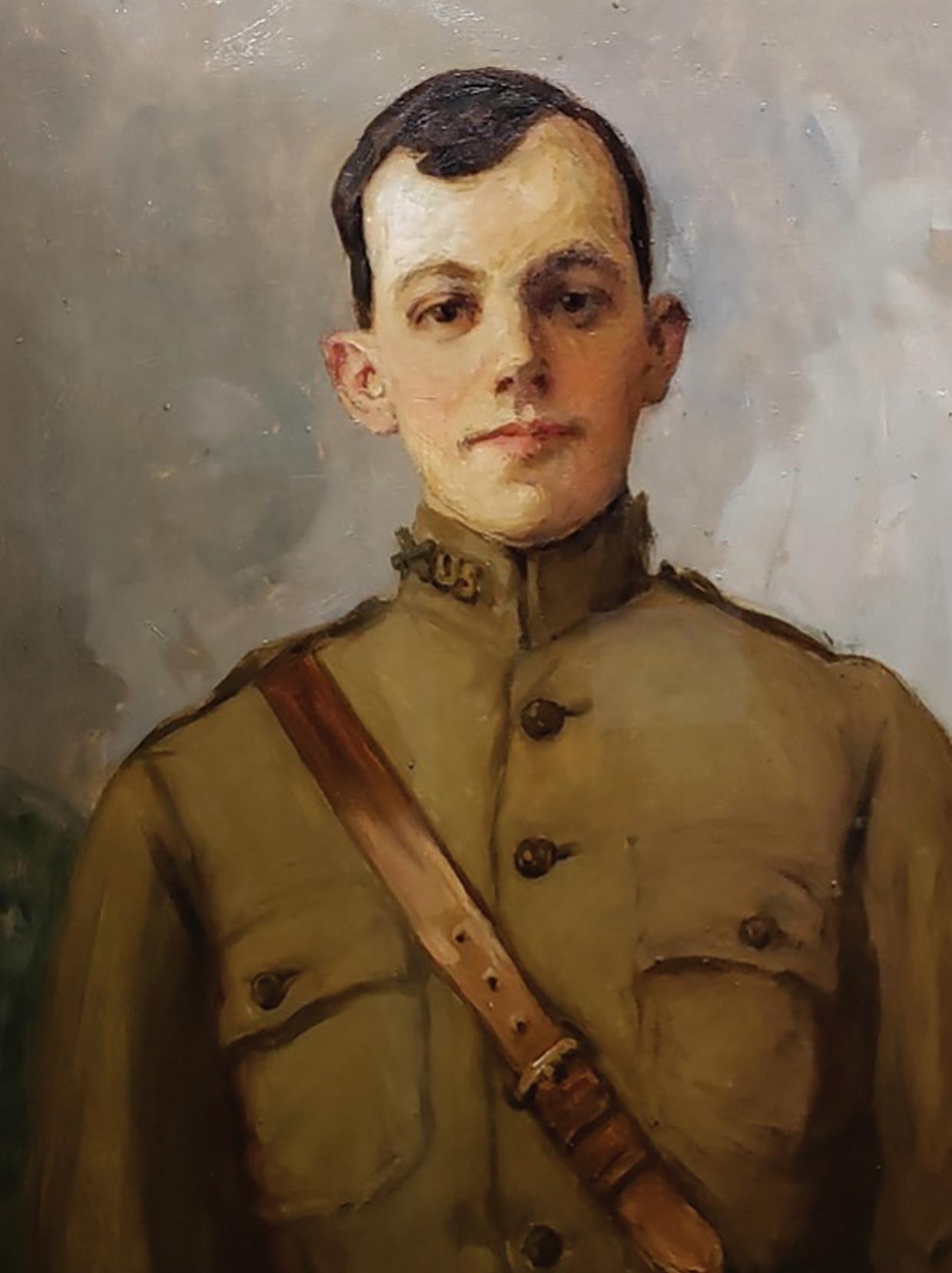
5 minute read
PAINTER, TEACHER, MASON— William Forsyth of Indianapolis
by Jim Keating, 33˚, Valley of Indianapolis
Some of our Masonic Brothers are quite famous and almost everyone knows their names, such as patriots George Washington and Benjamin Franklin, medical pioneer Dr. Charles Mayo, and astronauts Gus Grissom and John Glenn. Of course, the vast majority of Masons are men who go to work, support their families, and strive to improve their communities in the spirit of Masonic service. They are not famous, but they are the kind of people who make our world a better place.
One such Mason was the painter and teacher William Forsyth. He was an Indiana Freemason and member of the Scottish Rite Valley of Indianapolis. As a painter, he is best remembered for his portrait work and impressionistic landscapes. He was also a determined and beloved teacher, ambassador for fine arts, civic leader, and completely devoted family man. He was generous in donating both his time and his artistic talents to make his community a more vibrant and attractive place.

Self-portrait by William Forsyth
Forsyth’s membership card at the Indianapolis Scottish Rite shows he was born in California in 1854. This is accurate but a little misleading. California in this case refers to a small town near Cincinnati which has since disappeared from the map, having been annexed into the city years ago.
When he was 10 years old, the Forsyth family moved to Versailles, Indiana. The boy showed an aptitude for art, sketching scenes around his home. But the family was not wealthy, and it wasn’t possible for him to study art. He did not take formal instruction until he was 23 years old, studying in the short-lived Indiana School of Art in Indianapolis. This was enough for him to develop competence in basic skills and demonstrate his considerable talent; with so little actual training, it is remarkable that he was awarded admission to the Royal Academy of the Arts in Munich, Germany.
While in Europe, he traveled in Germany and France. Mostly he painted landscapes with the newly developed method of working impressionistically en plein air, that is, painting outdoors. A few years later, when he returned to Indiana, Forsyth set aside time annually to travel with friends and paint in the countryside, mostly in the south central part of the state and along the Ohio River.
Forsyth taught art in Fort Wayne, Muncie, and Indianapolis, partnering with other Indiana artists such as T.C. Steele and Otis Adams. He was one of the leading figures in the Bohe Club, an Indianapolis society that tried to boost fine arts. The group initially wanted to be known as the Bohemian Club, a reference to the free-wheeling artistic and literary movement in Europe at the time, but the sign painter could only find space on the door for the first four letters of the word, so the club was known by its jaunty abbreviation. The organization was an exciting place. He and several other members became known as the Society of Western Artists, and later they were known internationally as The Hoosier Group.
From 1907 to 1933, Forsyth taught at the Heron School of Art in Indianapolis, a very highly regarded institution both then and now. He was beloved by his students who knew he genuinely cared about them. These were the years of Forsyth’s greatest and most energetic community outreach.
It was during this time that his concern for public service and Masonic Brotherhood led him to the Irvington Lodge near his home on the east side of Indianapolis. There, he was initiated October 11, 1907, passed October 25, 1907, and raised the same year on November 8. He was very active in his community, a tireless letter writer, and known as an assertive advocate for the arts in Indianapolis. In 1924, he joined the Indianapolis Valley of the Scottish Rite. He received the 32˚ on March 20, 1924. He was devoted to Masonic activity and tried to make his work and teaching a reflection of the values he learned in the Fraternity.

Scottish Rite membership record for William Forsyth
Forsyth made a habit of donating pictures to the schools his children attended, resulting in several donations to the Indianapolis Public Schools and Butler University where his daughter studied.
One of his most poignant works is a portrait of Hilton U. Brown Jr., a Butler student whose father was President of the Butler Board of Trustees. The young man left college early to take a military commission in World War I. He served in France and was killed in battle only a few days before the armistice ended the war. The painting hangs in Robertson Hall on the Butler campus in Indianapolis and still reminds us, even after a century, of the honor and selfless patriotism shown by those who served.

Portrait of Hilton U. Brown, Jr., by William Forsyth
The Great Depression brought trouble to the Forsyth family as it did to so many others. In 1933, after almost three decades, Forsyth was laid off from his teaching position at the Heron School. It is probably more accurate to say he was fired, because there was no chance he would ever be called back. This was a terrible blow. It was a job he loved and a job he needed. Friends helped arrange some work for him with the Works Progress Administration (WPA), where he served as a mural painter. Other friends and former students sent commissions his way and that helped some. Even so, the strain was awful, and his health suffered as a result. He died March 29, 1935 and was buried along with many other notable Indiana citizens in Crown Hill Cemetery in Indianapolis.










